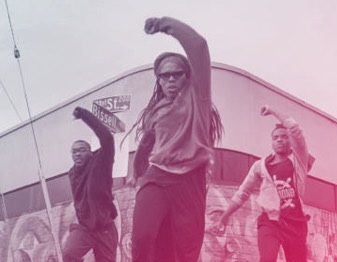As soon as the lights go down and the shadows come out, it’s clear that Word For Word’s adaptation of “Angel Face” intends to be loyal to the dark, pulpy genre its author helped to create.
In fact, as it does for all its productions, Word For Word’s performance speaks every word from the original short story, including all the “he said” “she said” quotation attribution, scene-setting, and exposition. It’s all there, delivered to the audience, for the most part, as puckish asides.
A good thing, too. Woolrich, whose own life seemed to follow the uncanny conventions of the fiction he wrote, often lends his characters amazing abilities of description. Even his most meat-headed characters are capable of capturing a scene or a thought in powerful, evocative thuds of phrasing. All of which is preserved and enhanced in the stage adaptation.
“Angel Face,” a short story Woolrich penned under the pseudonym William Irish, was discovered by dramaturg Randall Homan while looking for noir stories featuring female detectives. And although the protagonist here isn’t a detective, she is as strong and sympathetic a female character as you’re likely to find in any story of the time. “Angel Face” is the story of Jerry Wheeler, aka Honey Sebastian, aka Angel Face — a brassy New York broad whose brother is framed for murdering his curiously wealthy, socialite sweetheart. Caught seemingly red-handed, lingering above his girlfriend only a few minutes after she was last seen alive, Chick, the brother (played by Danny Wolohan), is “railroaded,” sent upstate in short order to face the electric chair. Jerry (Laura Lowry) has only a few weeks to prove his innocence. Luckily, she’s peaked the interest of Detective Nick Burns (John Flanagan), one of the “dicks” who helped put Chick away. With only a hunch as to who the real killer might be, Angel Face takes a job as a dancer in a seedy nightclub, and begins to peel away the layers of a conspiracy to frame her brother.
The plot is filled with all the strange twists and inexplicable turns that give the genre its narcotic, dreamlike feel, which is heightened by the stage setting and lighting, which draw out the shadows and darken the demeanors of the actors. A series of three screens in the background brilliantly capture the atmosphere for each scene, freezing characters in profile at pivotal moments. Thatched into ornamental design to evoke the gaudy decoration of a downtown nightclub or a back alley, they also catch the silhouettes of significant objects, such as the branding iron that nightclub king Militis uses to mark his wayward love interests.


